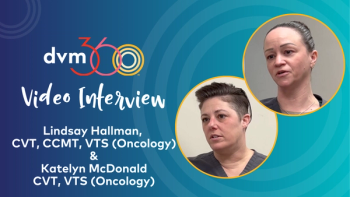
Understanding and managing cataracts and lens luxation in cats and dogs

Benjamin Bergstrom, DVM, MS, DACVO, talks about causes and treatment options for these lenticular diseases in cats and dogs
Benjamin Bergstrom, DVM, MS, DACVO, owner of The Eye Vets in Nashville, Tennessee, discusses cataracts and luxation of the lens in cats and dogs ahead of his lecture “Cloudy with a Chance of Cataracts: Diagnosis and Management of Lenticular Disease,” at the Fetch dvm360 Conference in Nashville. In this interview, Bergstrom explains causes of these lenticular diseases as well as their treatment options, noting differences in the causes of luxation between species and in treatment approaches.
Below is the transcript of the video, which has been lightly edited for clarity:
Benjamin Bergstrom, DVM, MS, DACVO: We will discuss cataracts, which is what we most commonly think of when we think of lenticular disease, diseases of the lens. The most common procedure associated with the development of cataracts is cataract removal. So, as cataracts progress to a point where an animal's vision is compromised, my objective as an ophthalmologist is, I want an animal to be able to see and see the best that they can, so removing the cataract can restore normal vision in a lot of instances.
The other disease process, or another disease process that we talk about, is luxation of the lens in both the dog and the cat, [which] can happen for different reasons. So, luxation of the lens, again, means separation from its normal attachments in the eye, which is normally behind the pupil. It can shift into the front of the eye—which is an ocular emergency in dogs—can fall to the back of the eye in dogs; that can happen as a primary birth defect, birth inherited issue. In cats, it most commonly happens secondary to chronic inflammation in the eye, or uveitis.
To remedy the situation, in dogs, the gold standard of care is removing the lens. If they luxated anteriorly, we make an incision in the eye, remove it, close the eye. We have the option of also pushing the lens back to the back of the eye, closing the pupil with a medication to keep it in a safer place back in the back of the eye.
In kitties, however, we don't have to immediately consider surgical intervention. A lot of times, we can medically manage cats with pressure medications, anti-inflammatory medications. The most important part about cats is, because it happens secondary to chronic inflammation, is figuring out what the source of chronic inflammation is.
Newsletter
From exam room tips to practice management insights, get trusted veterinary news delivered straight to your inbox—subscribe to dvm360.






